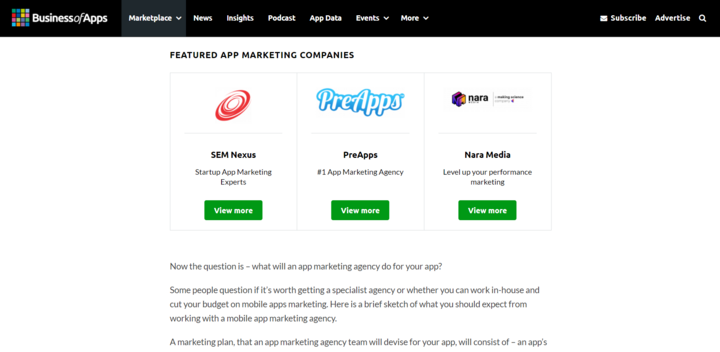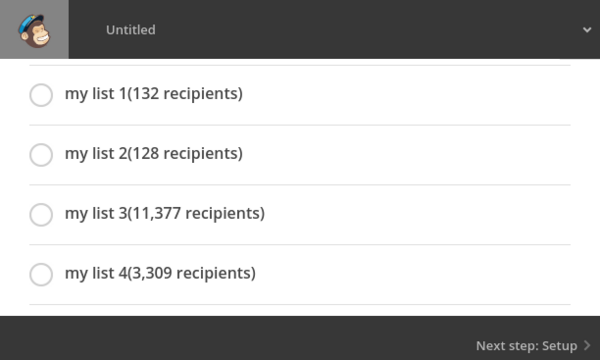Disciplined development process guides Business of Apps’ innovation on WordPress CMS
By: Peter Keung | June 1, 2021 | Business solutions, cms, development, and Web solutions
Business of Apps is always looking to add features to its WordPress websites to keep pace with the rapidly changing apps market, the focus of the B2B publisher’s daily news coverage, opinion, and events.
“We probably do things that no one should be doing on WordPress,” joked James Cooper, the director of London-based Soko Media, the parent company for Business of Apps.
WordPress is Cooper’s content management system (CMS) of choice because of the almost limitless ecosystem of designers and consultants that has grown up around the world’s most popular CMS. But Business of Apps also knew that it needed a more disciplined, controlled approach to site management – a regime that’s not particularly common in WordPress environments, where adding a new third-party plugin is a matter of just a few clicks.
So it has turned to the team at Mugo Web to manage, test, and deploy all changes to its WordPress sites. The result is a stable, high-performance publishing environment that Cooper said “pushes the edge” of WordPress’s capabilities to support his fast-paced business, which has seen a 500 percent increase in overall visits since Business of Apps began working with Mugo about five years ago.
Process plus technical expertise equals success
The Mugo Web team manages Business of Apps’ WordPress environment with an enterprise software process involving proper code management and version control. There is a clear review process that helps with day-to-day development as well as work with third parties such as designers, who can chip in on projects without conflicts.
“Whenever you introduce third-party code, it can be volatile, so we’ve implemented a process by which we review and test every change, as you would with any enterprise software,” said Mugo Web project manager Noble Hurst, who is part of Mugo’s Business of Apps team, along with developer Carlos Mauri.
Communication
The feature request and dev process is handled in a web-based ticketing system that Mugo Web uses for all its work. Cooper and his team at Business of Apps submit an idea for a new feature via a ticket, which creates a clear, trackable communication thread about the project.
Evaluation
Next, the Business of Apps and Mugo Web teams meet to discuss options for accomplishing the desired functionality. This includes vetting third-party plugins for compatibility with each other, avoiding the dreaded “plugin conflict” messages – exactly the sort of volatility that Business of Apps wants to avoid.
Implementation
Any new code to be added to a Business of Apps site is handled through a formal Git repository and workflow. It’s fully tested in a dev and staging environment, and then rolled out in a controlled launch.
New features to grow the business
The scope of work Mugo Web manages for Business of Apps is limited only by the goals the publisher wants to achieve. Click here for a full case study on the Mugo Web’s work on the Business of Apps platform.
- The first project Mugo Web lead for Business of Apps was an email automation project. Mugo Web built custom code for exporting content stored in WordPress to Mailchimp templates, saving the Business of Apps team the tedious task of copying and pasting content between the two platforms. The system is still in use today.
- Advanced analytics and conversion tracking have been the focus of several projects, Mauri said, including a sophisticated intra-page tracking system, using Google Tag Manager, to report on activity based on content position with native advertising directories. “Understanding the customer path is a big issue, so we spend a lot of time on these types of projects,” Mauri said.
Using Google Tag Manager and advanced analytics, Business of Apps can track response to specific native advertising placements in its vendor marketplaces.
- The Mugo team created custom code to automatically create an on-page table of contents, based on header style, to make very long, SEO-rich pages landing pages easier for readers to navigate. Recently, Mugo Web implemented a custom related content widget with the goal of extending user sessions and engagement.
Stable, managed growth
The apps market is so dynamic that it’s impossible to predict exactly what the next major site project might be, Cooper said. But whatever the need, he’s confident that the development and site management process managed by Mugo Web will let his team innovate with confidence.
Learn more about the Business of Apps case study.





